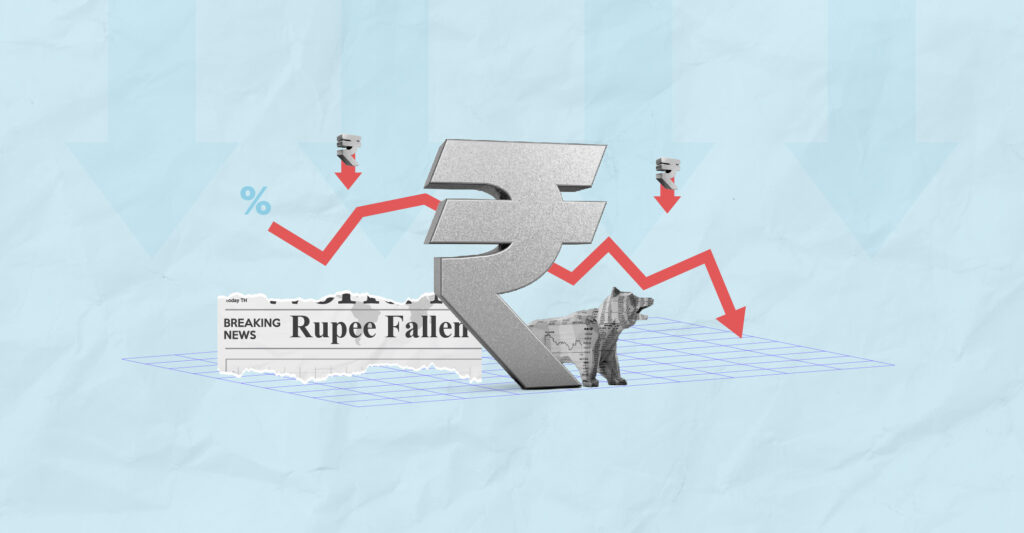Last Updated on May 16, 2022 by Neera Bhardwaj
On Monday, 9 May 2022, the Indian Rupee hit an all-time low of 77.47 against the US Dollar, bringing further bad news for the economy that is already reeling under high inflation!
But this is not a sudden occurrence. The Rupee has been on a depreciating trend since the beginning of 2022. A combination of factors has just fueled the fire far more, including the Russia-Ukraine war, global uncertainty, China’s vulnerability, rising inflation, and aggressive rate hikes by central banks across the globe.
But what is causing this, and how does it affect you? Let’s understand.
Table of Contents
Cause and effect
The direct effect can be seen in the United States, where the Federal Reserve raised interest rates by 0.5%. Hiking interest rates is one of the strategies to combat inflation.
However, this has resulted in higher borrowing costs, i.e. higher interest rates on loans, limiting business growth. This forces foreign investors to offload their risky assets from the country, and the demand for the Rupee weakens.
Impact on the Indian stock market
Currently, funds totalling $17.7 bn have been withdrawn from the Indian stock market by foreign investors. This means that equity markets could fall sharply, resulting in a drop in stock and equity mutual fund investments.
Impact on imports
With the dip in the Rupee value, importing items is likely to get more expensive as merchants need to buy Dollars to pay. Oil is one such commodity that will get costlier, directly impacting you. Furthermore, other imported items and components, such as cars and appliances, are likely to become more expensive, resulting in rising prices. This increase in prices could exacerbate the already-high inflation.
Impact on loans
As the Rupee falls in value, import prices rise, making goods and commodities more expensive. Therefore, if you wish to fund a purchase via a loan, you would have to apply for a higher amount. To add to this, banks have raised interest rates on loans after the RBI increased the repo rate to 4.40% recently. This makes EMIs more expensive.
Impact on foreign education
Foreign education will become more expensive as the Rupee loses value against the US dollar. Because of the rupee depreciation, one will have to shell out more rupees for every dollar. As a result, students studying abroad or planning to relocate overseas will need to increase their budgets.
Impact on foreign travel
With the new Rupee rate, $1 equals Rs 77.47. Consumers expecting or planning to take a vacation abroad will have to spend more money on conveyance.
Impact on remittances
On the happier side, non-resident Indians (NRIs) who send money back home, will be able to send more in Rupee value.
What is the way ahead?
It is critical to consider how the ongoing market volatility affects the nation as a whole; it is now up to the RBI to decide how to navigate further. One way can be that the central bank releases Dollars to control the rising volatility. However, for the first time in a year, the forex pile has fallen below $600 bn, depleting $36 bn in 2022 so far, which remains a source of concern for the RBI.
While we hope you enjoyed reading this one, you can also track how the market reacts to the rising volatility by eyeing the Market Mood Index (MMI) here. This MMI tool can help you track the market sentiment and investors’ attitudes towards the overall stock market or a specific stock!
- Select Stocks With Analyst Ratings Filters - Jun 15, 2023
- ITC’s Report Card Is Here! - Jun 8, 2023
- Top 10 Most Popular Stocks on Tickertape - Jun 2, 2023




